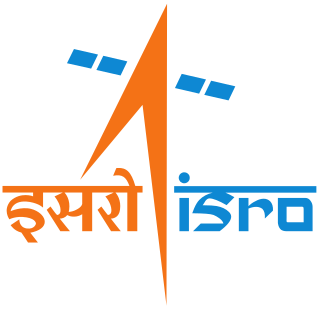I-2K is a satellite bus developed by Indian Space Research Organisation (ISRO), and marketed by Antrix Corporation. [1] It is a standard bus for 2,000 kg class satellites; the 'I' in I-2K stands for INSAT, a group of communication satellites developed and launched by ISRO. The satellite buses developed by ISRO are specifically developed for small and medium weight satellites. I-2K spacecraft bus can supply DC power up to 3000 watts. [2] I-2K platform is targeted towards satellites in liftoff mass in range of 1500–2500 kg. [3]

The Indian National Satellite System or INSAT, is a series of multipurpose geostationary satellites launched by ISRO to satisfy the telecommunications, broadcasting, meteorology, and search and rescue operations. Commissioned in 1983, INSAT is the largest domestic communication system in the Indo-Pacific Region. It is a joint venture of the Department of Space, Department of Telecommunications, India Meteorological Department, All India Radio and Doordarshan. The overall coordination and management of INSAT system rests with the Secretary-level INSAT Coordination Committee.

Geosynchronous Satellite Launch Vehicle (GSLV) is an expendable launch system operated by the Indian Space Research Organisation (ISRO). GSLV was used in fourteen launches from 2001 to 2021. Even though GSLV Mark III shares the name, it is an entirely different launch vehicle.

The Indian Space Research Organisation is the national space agency of India, headquartered in Bengaluru. It operates under the Department of Space (DOS) which is directly overseen by the Prime Minister of India, while the Chairman of ISRO acts as the executive of DOS as well. ISRO is India's primary agency for performing tasks related to space-based applications, space exploration and the development of related technologies. It is one of six government space agencies in the world which possess full launch capabilities, deploy cryogenic engines, launch extraterrestrial missions and operate large fleets of artificial satellites.

GSAT-4, also known as HealthSat, was an experimental communication and navigation satellite launched in April 2010 by the Indian Space Research Organisation on the maiden flight of the Geosynchronous Satellite Launch Vehicle Mk.II rocket. It failed to reach orbit after the rocket's third stage malfunctioned. The third stage was the first Indian-built cryogenic-fuelled upper stage, and was making its first flight. The ISRO suspects that the failure was caused by the third stage not igniting.

The Master Control Facility (MCF) is a facility set up by the Indian Space Research Organisation (ISRO) in the city of Hassan in the Indian state of Karnataka. Established in 1982, this facility is responsible for monitoring and controlling geostationary and geosynchronous satellites launched by ISRO. This was the only Master Control Facility of ISRO till another one was established in Bhopal in 2005.

A satellite bus is the main body and structural component of a satellite or spacecraft, in which the payload and all scientific instruments are held.
GSAT-5P, or GSAT-5 Prime, was an Indian communications satellite which was lost in a launch failure in December 2010. Part of the Indian National Satellite System, it was intended to operate in geosynchronous orbit as a replacement for INSAT-3E.
INSAT-4CR was a communications satellite operated by ISRO as part of the Indian National Satellite System. Launched in September 2007, it replaced the INSAT-4C satellite which had been lost in a launch failure the previous year. The satellite was initially stationed in geostationary orbit at a longitude of 74 degrees east, with expected operational life of at least ten years, however this may have been reduced by the underperformance of the Geosynchronous Satellite Launch Vehicle which placed it into orbit. INSAT-4CR is planned to be replaced by GSAT-31, which was launched on February 6, 2019.
GSAT-14 is an Indian communications satellite launched in January 2014. It replaced the GSAT-3 satellite, which was launched in 2004. GSAT-14 was launched by a Geosynchronous Satellite Launch Vehicle Mk.II, which incorporated an Indian-built cryogenic engine on the third stage.
This page includes a list of satellite buses, of which multiple similar artificial satellites have been, or are being, built to the same model of structural frame, propulsion, spacecraft power and intra-spacecraft communication. Only commercially available buses are included, thus excluding series-produced proprietary satellites operated only by their makers.
GSAT-7 or INSAT-4F is a multi-band military communications satellite developed by the Indian Space Research Organisation. The Indian Navy is the user of the multi-band communication spacecraft, which has been operational since September 2013. According to defense experts, the satellite will enable the navy to extend its blue water capabilities and stop relying on foreign satellites like Inmarsat, which provide communication services to its ships.
INSAT-4B was an Indian communications satellite which forms part of the Indian National Satellite System. Launched in 2007, it was placed in geostationary orbit at a longitude of 93.48° East.
I-1K is a satellite bus developed by the Indian Space Research Organisation (ISRO) and marketed by Antrix Corporation. The I-1K bus is designed to be compatible with lightweight geostationary satellites and is commonly used for meteorological satellites.
I-3K or the INSAT 3000 is a satellite bus developed by Indian Space Research Organisation (ISRO), and marketed by Antrix Corporation and New Space India Ltd. It is the standard bus for 3,000-kg class satellites; the 'I' in I-3K stands for INSAT, a group of communication satellites developed and launched by ISRO. The I-3K bus can supply DC power up to 6500 watts, and is suitable for satellites with lift-off mass in range of 3,000-3,400 kg.
I-4K is a satellite bus being developed by Indian Space Research Organisation (ISRO). It will be a standard bus for 4,000–6,500 kg (8,800–14,300 lb) class communication satellites; the I in I-4K stands for INSAT, a group of communication satellites developed and launched by ISRO. The I-4K spacecraft bus can supply DC power of 10 to 15 kilowatts.

GSAT-29 is a high-throughput communication satellite developed by the Indian Space Research Organisation (ISRO). The mission aims at providing high-speed bandwidth to Village Resource Centres (VRC) in rural areas. The two Ku and Ka operational payloads will provide communication services to Jammu and Kashmir and Northeast India under Digital India programme. At the time of launch GSAT-29 was the heaviest satellite, weighing 3,423 kg (7,546 lb), that was placed in orbit by an Indian launch vehicle. Approved cost of GSAT-29 is ₹175.63 crore (US$22 million).

PSLV-C42 was the 44th mission of the Indian Polar Satellite Launch Vehicle (PSLV) program and its 12th mission in the Core Alone (CA) configuration. PSLV-C42 successfully carried and deployed 2 earth observation satellites in sun-synchronous orbits at an altitude of 588 kilometres (365 mi). It was launched on 16 September 2018 by the Indian Space Research Organisation (ISRO) from the first launch pad of the Satish Dhawan Space Centre at Sriharikota, Andhra Pradesh. The two international satellites were launched as part of a commercial arrangement between Surrey Satellite Technology Limited (SSTL) and ISRO's commercial arm Antrix Corporation Limited, run under the auspices of the Indian Government's Department of Space.
I-6K is a Satellite bus developed by Indian Space Research Organisation (ISRO) It will be a standard bus for 4,000–6,500 kg (8,800–14,300 lb) class communication satellites; the I in I-6K stands for INSAT and 6 signifies that it can support satellites up to 6,000 kg in weight. The I-6K spacecraft bus can supply DC power of 10 to 15 kilowatts.